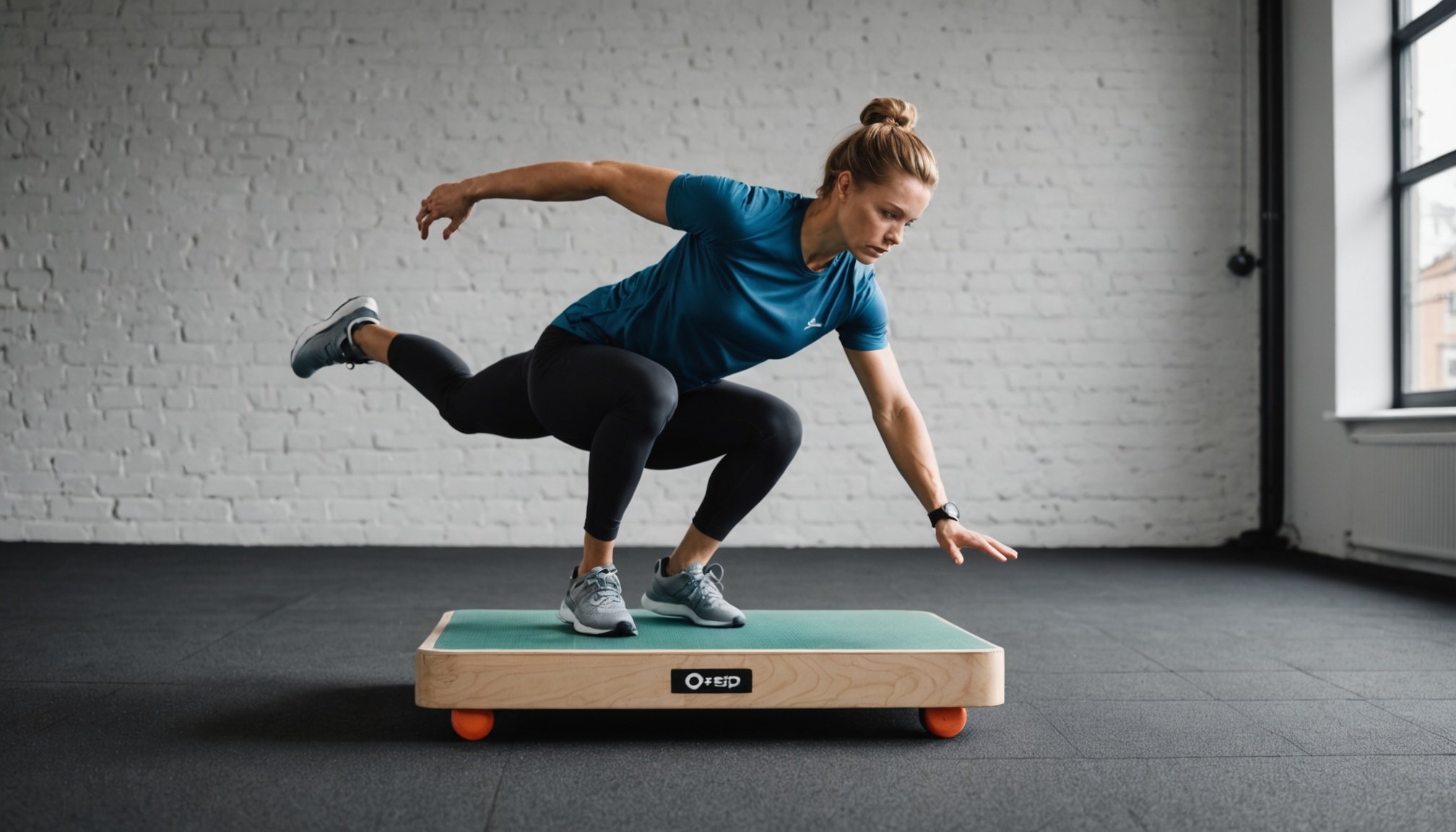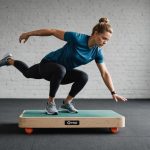Understanding the Concept of Balance
Balance, an important aspect of fitness, is the ability to maintain your body’s alignment and stability while moving or staying still. It’s a crucial skill that affects your overall performance and health. As you age, your balance can deteriorate, leading to falls and injuries. Hence, balance training has become an important part of many exercise regimens.
A variety of balance exercises exist, designed to improve stability and coordination. But have you ever considered how the surface you’re standing on might affect your balance exercise effectiveness? This article will delve deep into how the type of surface, like a foam pad or a solid platform, can influence balance exercises’ effectiveness.
Also to see : What specific exercises target the serratus anterior for better scapular movement?
The Impact of Surface Types on Balance Exercises
While balance exercises are beneficial, the surface type used during training can influence the outcomes. Based on several studies, it has been observed that the surface type can significantly alter the effectiveness of these exercises.
Delving into the Results of Scholarly Studies
In a study available on Crossref and PubMed, a group of older adults participated in balance training on various surface types. The study, titled "Effects of Balance Training on Different Surfaces in Older Adults," was carefully controlled to isolate the impact of the surface type. The participants were divided into groups and each group was assigned to train on a different surface – foam or a stable platform.
Have you seen this : What are the latest advancements in wearable technology for tracking muscle development?
The study’s results, which are available for public viewing on Google Scholar and DOI, showed that the participants who trained on foam surfaces experienced more balance improvement than those who trained on stable platforms. The foam surface, due to its irregularities and softness, provided a more challenging exercise environment. This increased the intensity of the exercises and led to better balance in participants.
Another study published in the Journal of Gerontology studied the effects of surface type on balance in women. This group was chosen due to the higher incidence of falls and balance issues in older women. The women were divided into groups, with each group performing balance exercises on a different surface type – foam, carpet, and a solid platform. The results showed that women who trained on foam surfaces exhibited the most significant improvements in balance, further supporting the findings of the initial study.
Sway as a Measure of Balance Effectiveness
One of the ways researchers measure the effectiveness of balance exercises is by analyzing the ‘sway’ of participants. Sway refers to the involuntary, continuous movements that occur when you try to maintain a stationary upright position.
In the studies mentioned, sway was measured using pressure-sensitive platforms and recording devices. The participants who trained on foam surfaces exhibited less sway over time, indicating an improvement in balance. This aligns with the idea that a more challenging surface promotes better balance development.
Foam Surfaces Vs. Platform Surfaces
Balance exercises performed on foam surfaces tend to have better outcomes due to the additional challenges they present. The instability of foam surfaces forces your body to work harder to maintain balance, thereby strengthening your balance skills. On the other hand, platform surfaces provide a stable base, requiring less effort to maintain balance.
Training on foam surfaces could be likened to training with weights. The added resistance helps to develop strength and skill. Similarly, the instability of foam surfaces provides a form of resistance for balance, helping to strengthen the muscles and mechanisms involved in maintaining stability, thus improving balance.
Techniques to Enhance Balance Training
While it has been established that foam surfaces can improve balance exercises’ effectiveness, there are other ways to augment your training. For instance, you can incorporate more challenging exercises or increase the duration of your training sessions. Additionally, you can combine different types of exercises to target different aspects of balance.
Balance exercises are diverse and can be modified to suit your fitness level and goals. From standing on one leg to walking heel to toe, these exercises target the muscles that help you stay upright. Incorporating these exercises into your routine can help improve your balance and overall coordination.
Remember, when starting a new exercise regimen, it’s always important to consult with a professional to ensure the exercises are safe and suitable for your condition. Additionally, while the research suggests foam surfaces lead to improved balance, it’s necessary to start slow and gradually increase the intensity to avoid injuries.
The Need for Further Research
While the existing research provides valuable insights into the influence of surface type on balance exercises’ effectiveness, there’s a need for more comprehensive studies. Such studies should take into account factors like age, fitness level, and the presence of any health conditions. This will provide a more detailed understanding of how different surface types affect balance exercises’ effectiveness for different population segments.
Moreover, future research should explore the long-term effects of training on different surfaces. While the studies mentioned focused on the immediate effects, it would be interesting to see if the advantage of foam surfaces holds up over an extended period. Additionally, research should also investigate the transferability of these improvements to everyday life.
To conclude, the surface type you choose for your balance exercises can significantly influence the exercise’s effectiveness. So, next time you’re planning to do some balance training, consider using a foam surface to potentially enhance your balance and stability.
Practical Applications of Balance Training on Different Surfaces
Balance training on various surfaces has several practical applications, especially in the field of physical therapy and fitness training. The research findings allow trainers and therapists to tailor their balance training programs to be more effective based on the surface type used.
In the field of physical therapy, understanding how surface types affect balance exercises’ effectiveness is crucial in designing rehabilitation programs for patients. For example, older adults or individuals recovering from an injury might initially train on stable platforms to safely regain basic balance skills. As their balance improves, they could progress to foam surfaces to challenge their balance further and achieve better results.
Similarly, in fitness training, this knowledge can be applied to enhance athletes’ balance and coordination – skills that are critical in many sports. A football player, for example, might benefit from training on a balance pad due to the unpredictable nature of the playing field. The instability of the foam surface makes it more similar to the uneven terrain of a football pitch, thus providing a more sport-specific training environment.
A systematic review of several studies on Google Scholar, Scholar Crossref, and Crossref PubMed further reinforces the benefits of foam surface training. The review shows that training on foam surfaces improves both static balance (the ability to maintain a still posture) and dynamic balance (the ability to stay balanced while moving). Therefore, whether you’re an older adult aiming to reduce fall risk or an athlete looking to improve performance, foam surface training can be an effective strategy.
Conclusion: Making the Right Surface Choice for Balance Training
To wrap up, the surface type has a significant impact on balance training effectiveness. Balance exercises conducted on foam surfaces have shown to yield superior results, as per the results of the studies available on DOI Crossref and DOI PubMed. The instability of the foam surface enhances the intensity of the exercises, fostering better postural balance and reduced postural sway.
However, while the research leans towards foam surfaces for balance training, it’s essential to remember that exercise regimens should be individualized. Factors such as age, fitness level, health conditions, and specific needs and goals should be considered when designing a balance training program.
Although foam surfaces can provide a challenging environment for all, it’s crucial to start at a comfortable level and gradually increase exercise intensity, thus reducing the risk of injuries. Always consult with a professional before starting a new fitness routine.
Further research is indeed needed to understand the long-term effects of balance training on different surfaces and its applicability to everyday life. However, the current body of research provides promising insights into the potential of foam surfaces to enhance balance training effectiveness.
So, the next time you plan to undertake balance training, don’t forget to choose your surface wisely. Whether you’re an older adult looking to improve your balance skills or an athlete seeking to enhance your performance, incorporating foam surface training into your routine can be a game-changer. And, as always, remember to exercise safely and responsibly.










